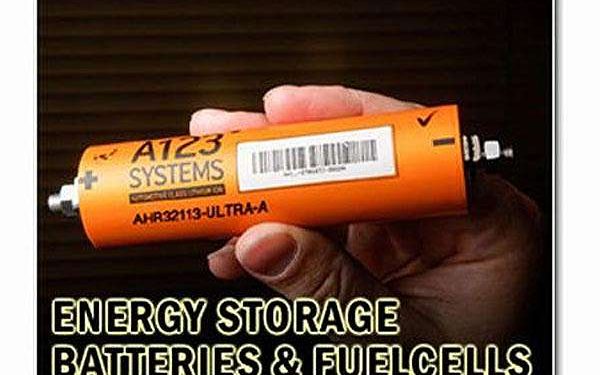Advancing safer lithium energy storage
by Erica Marchand
Paris, France (SPX) Feb 04, 2025
Charging our phones has become so routine that we rarely reflect on the breakthrough that made it possible. Rechargeable lithium-ion batteries, introduced commercially in the 1990s, propelled a technological revolution that earned their creators the 2019 Nobel Prize in Chemistry. This key innovation underpins the functionality of today’s smartphones, wireless headphones, and electric vehicles, making them both financially and environmentally practical.
As our devices grow more advanced, the demand for batteries that pack more power while remaining safe continues to rise. Yet engineering such power sources is far from simple. One promising design is the lithium metal battery, which could deliver more stored energy than standard battery types. Unfortunately, its potential is curtailed by a persistent issue: the emergence of tiny threads, or dendrites, that accumulate with each charge. When dendrites build up, they can form metallic connections that degrade battery functionality and pose a serious fire hazard. Until recently, researchers had limited approaches to probe and understand dendrite formation. In a new study led by Dr. Ayan Maity in the lab of Prof. Michal Leskes at the Weizmann Institute of Science’s Molecular Chemistry and Materials Science Department, scientists developed a novel method to identify the factors that spark dendrite growth, as well as to rapidly evaluate various battery components for improved safety and performance.
Rechargeable batteries function by allowing positively charged ions to migrate between the anode (negative electrode) and the cathode (positive electrode) through an electrolyte. Charging forces the ions back into the anode, counter to the usual flow in a typical chemical reaction, thus preparing the battery for another cycle of use. Lithium metal batteries take a different approach by employing a pure lithium metal anode, enabling higher energy storage. However, lithium metal is chemically reactive and quickly forms dendrites when it interacts with the electrolyte. Over time, enough dendrites can short-circuit the battery and raise the likelihood of combustion.
One way to avoid fire risks is to replace the volatile liquid electrolyte with a solid, nonflammable one, often comprising a polymer-ceramic composite. While altering the ratio of polymer to ceramic can influence dendrite growth, finding the ideal formulation remains a challenge for extending battery life.
To investigate, the team employed nuclear magnetic resonance (NMR) spectroscopy, a standard tool for pinpointing chemical structures, and tracked both dendrite formation and the chemical interplay within the electrolyte. “When we examined the dendrites in batteries with differing ratios of polymer and ceramic, we found a kind of ‘golden ratio’: Electrolytes that are composed of 40 percent ceramic had the longest lives,” Leskes explains. “When we went above 40 percent ceramic, we encountered structural and functional problems that impeded battery performance, while less than 40 percent led to reduced battery life.” Intriguingly, batteries with that optimal ratio displayed more dendrites overall, but those dendrites were effectively confined in a way that prevented destructive bridging.
These insights prompted a larger question: what halts the extension of the dendrites? The team hypothesized that a thin covering on the surface of dendrites, called the solid electrolyte interphase (SEI), might be crucial. This layer, formed when dendrites interact with the electrolyte, can affect how lithium ions travel through the battery, and it can also either prevent or accelerate the movement of harmful substances between electrodes. Both of these factors, in turn, can stifle or foster further dendrite development.
Probing the chemical composition of such thin SEI films is inherently difficult, since they measure only a few dozen nanometers thick. The researchers tackled this problem by enhancing the signals in their NMR data using dynamic nuclear polarization. This specialized technique leverages the strong spin of polarized lithium electrons, bolstering signals from the atomic nuclei in the SEI and exposing its chemical makeup. Through this refined lens, the researchers discovered precisely how lithium metal interacts with polymer or ceramic materials, revealing that certain SEI layers can simultaneously improve ion transport and block hazardous substances.
Their findings pave the way to design sturdier, safer, and more powerful batteries that will store greater energy for a longer duration with reduced environmental and economic costs. Such next-generation batteries could power larger devices without having to increase the physical size of the battery itself, while also extending the battery’s life cycle.
“One of the things I love most about this study is that, without a profound scientific understanding of fundamental physics, we would not have been able to understand what happens inside a battery. Our process was very typical of the work here at the Weizmann Institute. We started with a purely scientific question that had nothing to do with dendrites, and this led us to a study with practical applications that could improve everybody’s life,” Leskes says.
Research Report:Tracking dendrites and solid electrolyte interphase formation with dynamic nuclear polarization-NMR spectroscopy
Related Links
Weizmann Institute of Science
Powering The World in the 21st Century at Energy-Daily.com


















